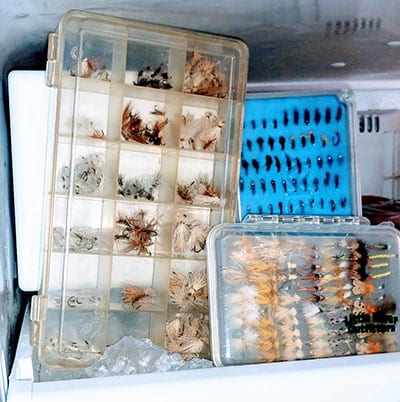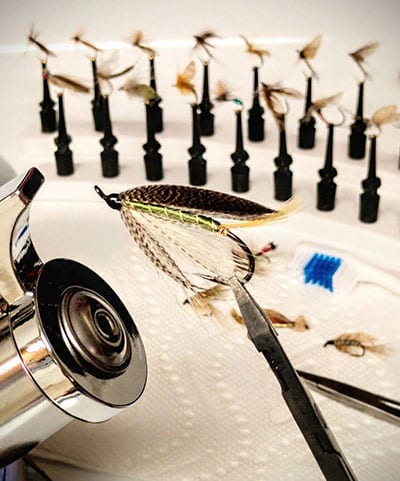I often hear about folks being gifted or inheriting batches of old flies from an old friend or family member that has passed away or has quit fishing because of health or old age. Or, sometimes they find a great deal at a flea market or yard sale. Some times it can be a windfall. Sometimes a bust.
During my 35 years of collecting flies, I have been blessed several times with a batch of old flies ranging from just a handful to hundreds of them. Folks who have received such blessings often have no idea what to do with them. Some folks have just started fly-fishing, others have been fishing for a few years, and others have been at it for decades. A lot of these folks are fly tiers, too.
As a collector, I have learned a few things about taking care of flies from a wide variety of sources. Lord knows there are lots of tips, differing opinions and ideas to consider. Here are just a few suggestions I have found to be very useful.
TIP 1: QUARANTINE
- DO NOT mix the old flies with your other flies even if you put just a few of them in your stream side boxes.
- Keep them away from your tying materials until you debug them. You can’t always tell if they have feather or fur mites but it is better to be safe than sorry.
TIP 2: EXTERMINATE
- Freezing them for a couple weeks should kill any living bugs. Be sure to include the wallets, boxes or fly holders. They can carry the bugs, too.
- Next, thaw them out and let them sit for another week or two to let any eggs hatch.
- Refreeze them for a week or two longer to kill any hatched bugs.
TIP 3: REFURBISHING

- Use a whistling type tea kettle to give them a steam cleaning. Use hemostats to suspend the fly in the steam to keep from burning your fingers.
- Lay the wet fly on a soft cloth or paper towel. Use a soft bristled toothbrush to remove dirt, grime and loose tying materials.
- Once you have the feather and fur smoothed out and looking new again, let it air dry. Once it is dry, fluff it up again to separate the fibers with the soft toothbrush.
- After a day or two of drying, you can treat them with whatever product you find appropriate.
Now that you have debugged, cleaned and preserved them, what to do, what to do?
Do like I do. If you are a collector, save the best of the duplicate flies and fish the extras. If you are not a collector, fish them all, or get in touch with me to see if I might be interested in some of them.
Mike Kesselring is the volunteer coordinator for the Great Smoky Mountain National Park. He owns Point to Point Shuttle Service based in Bryson City. His fly collection is legendary.
